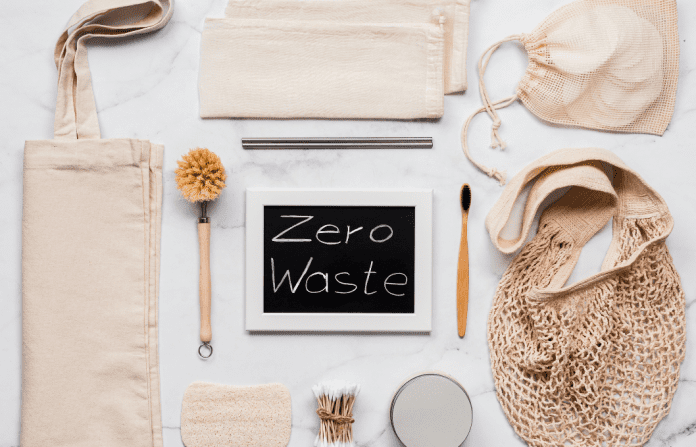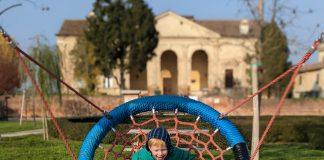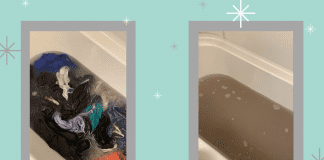This will be the third Earth Day my family will celebrate by trying to make zero waste.
Yes. You read that correctly.
The first year was a half-hearted attempt, at best. One of my children had brought home a flyer from school that promoted Earth Day and challenged families to create no trash for 24 hours. That year, I think we tossed a few extra items into the recycling bin and called it good.
Last year, we were all at home doing virtual school and work. My daughter reminded me it was Earth Day, and we should try to be zero waste again. She was so excited, “It will be easy, Mom – just put away the trash cans and make a compost bucket for the kitchen. I’ve read all about it.”
This is the kid who wants to build an earth-sheltered home someday and hopes to work in wildlife rehabilitation. How could I tell her no?
We made it until 2:00pm when the last of the butter was used and the empty wrapper stared up at us from the counter. My daughter and I were impressed with our efforts. My sons asked if the butter wrapper meant the trash cans could now come out of hiding. I said yes, and we went on with our day as normal.
But it got us all thinking. And it gave us a project during the pandemic.
As April 22, 2021 quickly approached, we geared up for “Round Three” of no waste. But this year will be different – because we have actually been practicing making less trash during the last twelve months, both due to coincidence and conscious choices. And here is why:
-
We buy less paper products.
 Spring 2020 created a shortage of certain items across the nation. Our town was no exception. As I was searching from store to store for paper towels, paper napkins, paper plates, and facial tissues, I decided to purchase extra kitchen towels, cloth napkins, handkerchiefs, and reusable makeup removers.
Spring 2020 created a shortage of certain items across the nation. Our town was no exception. As I was searching from store to store for paper towels, paper napkins, paper plates, and facial tissues, I decided to purchase extra kitchen towels, cloth napkins, handkerchiefs, and reusable makeup removers.
Yes, there is a bit more laundry involved. Yes, it looks like we’ve gone back in time when my six-year-old uses a hanky to blow his nose. But these items have held up very well over the last year, the kids love all the color choices, and they prefer the soft fabric to paper products now. We also changed from paper plates for quick meals and snacks to using our white ceramic plates and bowls every day (Sidenote: forgoing toilet paper was not negotiable even though my daughter did find a family on YouTube who explained how to make and wash personal care clothes. I said we cannot go that far.).
-
We use less plastic at home.
 Along with a shortage of paper products, our local stores were also low on Ziplock bags and plastic wrap for several months. A quick Amazon search led me to Stasher bags and Lunchskins for storing food and bees wraps for covering containers. The Stasher bags are dishwasher and microwave safe, extremely durable, and BPA, PVC, and latex free. They are now our go-to for storing leftovers and packing lunches. The Lunchskins are also dishwasher safe, but they are not airtight like the Stasher bags, so we use them for short-term food storage.
Along with a shortage of paper products, our local stores were also low on Ziplock bags and plastic wrap for several months. A quick Amazon search led me to Stasher bags and Lunchskins for storing food and bees wraps for covering containers. The Stasher bags are dishwasher and microwave safe, extremely durable, and BPA, PVC, and latex free. They are now our go-to for storing leftovers and packing lunches. The Lunchskins are also dishwasher safe, but they are not airtight like the Stasher bags, so we use them for short-term food storage.
The beeswax wrap covers have also held up rather well, but we find they do deteriorate ever so slightly with each hand-washing, even with the recommended soap. They have to be slightly warmed, usually by holding them in your hands for a few minutes until they’re pliable, in order to form a good seal over containers. As the wax disintegrates, the wraps lose their integrity; then we cut them up for the compost pile.
-
We learned how to compost.
We have tried composting in the past but were never completely successful. The first time, rats got into the bin and made a huge mess. The next time, we used a container that attached directly to the ground and had a secure lid. But moles or gophers tunneled underneath and helped themselves to the compost. The third time, we added too much grass clippings, and it turned into a lovely, sticky, mushy pile.
This time, we researched and corrected our mistakes. Anyone else spend their afternoons during lockdown watching tutorials on how to properly compost?
We discovered the right ratio of browns to greens, learned how to turn the compost, and tried adding worms (my kids’ favorite part) and coffee grounds. We kept everything in a tote with holes that I drilled in the bottom and a loose lid on top. By October when it was time to plant tulip bulbs and transplant day lilies, our compost container gave us real soil – fairly black and dense with just a few egg shells still intact.
-
We recycle smarter.
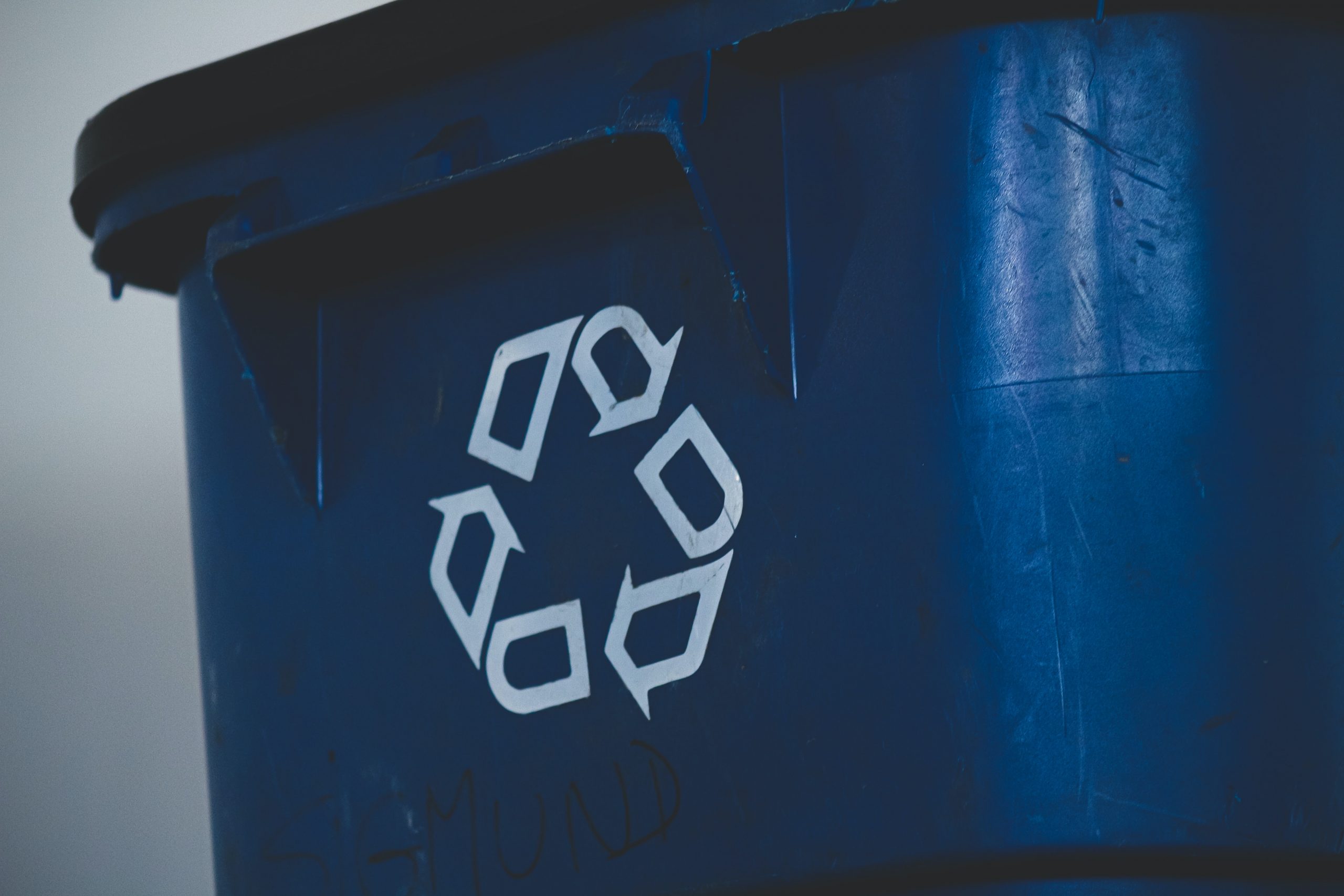
We have always had a recycling tote, no matter where we have lived. But we usually just tossed in anything that looked remotely recyclable – any plastics or glass or pizza boxes. Our most sincere apologies to Mother Earth.
We moved recently and actually read the pamphlet that came with our new city-issued garbage cans. Our current town picks up recycling once a week for plastics #1 through #7, aluminum, tin, newspaper, magazines, junk mail, and cardboard including items like cereal boxes. We set aside plastic grocery bags for a special collection bin at the grocery store, and we separate our glass jars to take to a neighboring town’s recycle site every few months. Pizza boxes are now put in the trash…as they probably should have been all along.
-
Our grocery shopping looks different.
We were fortunate enough to have neighbors last year who gardened and shared their produce. This summer, we are trying our own hand at a vegetable garden – we’ve grown small plants and flowers before. We are also lucky to buy farm-fresh eggs from a co-worker and get apple cider from a friend with an orchard. We have become frequent customers at the local butcher shop since meat quantities were limited at the big-box stores in 2020, and we learned how to make bread (along with most of America, I think). We planned our meals and strategized our grocery shopping, out of necessity. And then we realized, we preferred it that way. Now that restaurants and stores are fully operational in our area, we find ourselves still leaning toward slow, real food. We will see how long that lasts!
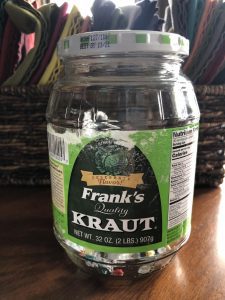 We discovered small changes over time are not that difficult.
We discovered small changes over time are not that difficult.
During the past twelve months, we’ve learned through books, podcasts, or online resources that there is a wealth of information about living green. It’s great to see my children interested in researching how shoes can come from plastic bottles or how to design cob houses (two of them are very curious about sustainable architecture). They are intrigued by the families who collect all their trash for a year in a pickle jar (including one military family), which we learned is one of the definitions of zero waste.
Maybe our kids will take big environmental leaps in their lives, but currently, our family is happy with the little changes we’ve made. It’s been an educational pandemic project.
So here we go for Earth Day 2021…with our pickle-jar-as-a-trash-can in hand. Actually, it’s an empty sauerkraut jar because we live in Nebraska.


